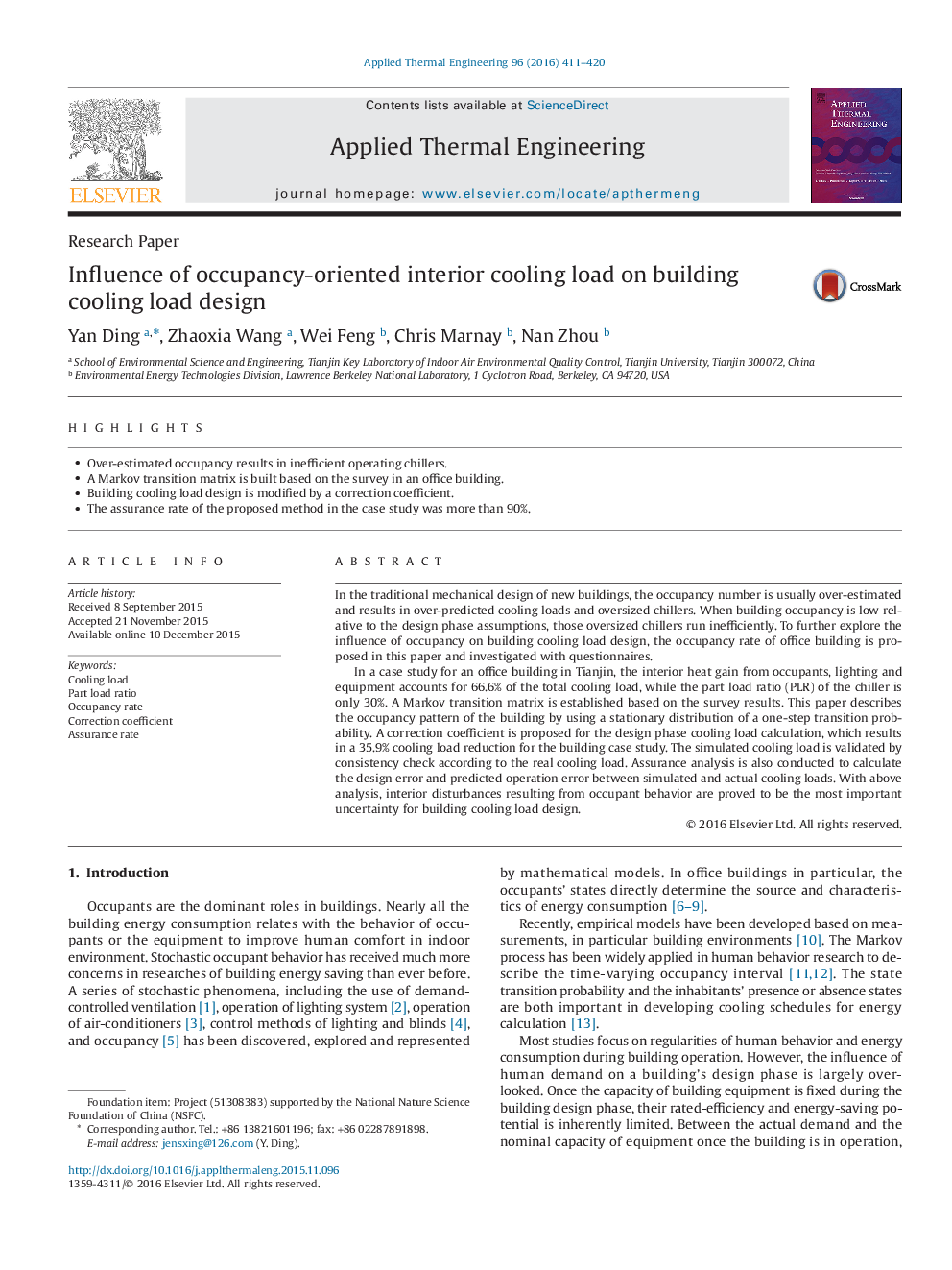| Article ID | Journal | Published Year | Pages | File Type |
|---|---|---|---|---|
| 644982 | Applied Thermal Engineering | 2016 | 10 Pages |
•Over-estimated occupancy results in inefficient operating chillers.•A Markov transition matrix is built based on the survey in an office building.•Building cooling load design is modified by a correction coefficient.•The assurance rate of the proposed method in the case study was more than 90%.
In the traditional mechanical design of new buildings, the occupancy number is usually over-estimated and results in over-predicted cooling loads and oversized chillers. When building occupancy is low relative to the design phase assumptions, those oversized chillers run inefficiently. To further explore the influence of occupancy on building cooling load design, the occupancy rate of office building is proposed in this paper and investigated with questionnaires.In a case study for an office building in Tianjin, the interior heat gain from occupants, lighting and equipment accounts for 66.6% of the total cooling load, while the part load ratio (PLR) of the chiller is only 30%. A Markov transition matrix is established based on the survey results. This paper describes the occupancy pattern of the building by using a stationary distribution of a one-step transition probability. A correction coefficient is proposed for the design phase cooling load calculation, which results in a 35.9% cooling load reduction for the building case study. The simulated cooling load is validated by consistency check according to the real cooling load. Assurance analysis is also conducted to calculate the design error and predicted operation error between simulated and actual cooling loads. With above analysis, interior disturbances resulting from occupant behavior are proved to be the most important uncertainty for building cooling load design.
